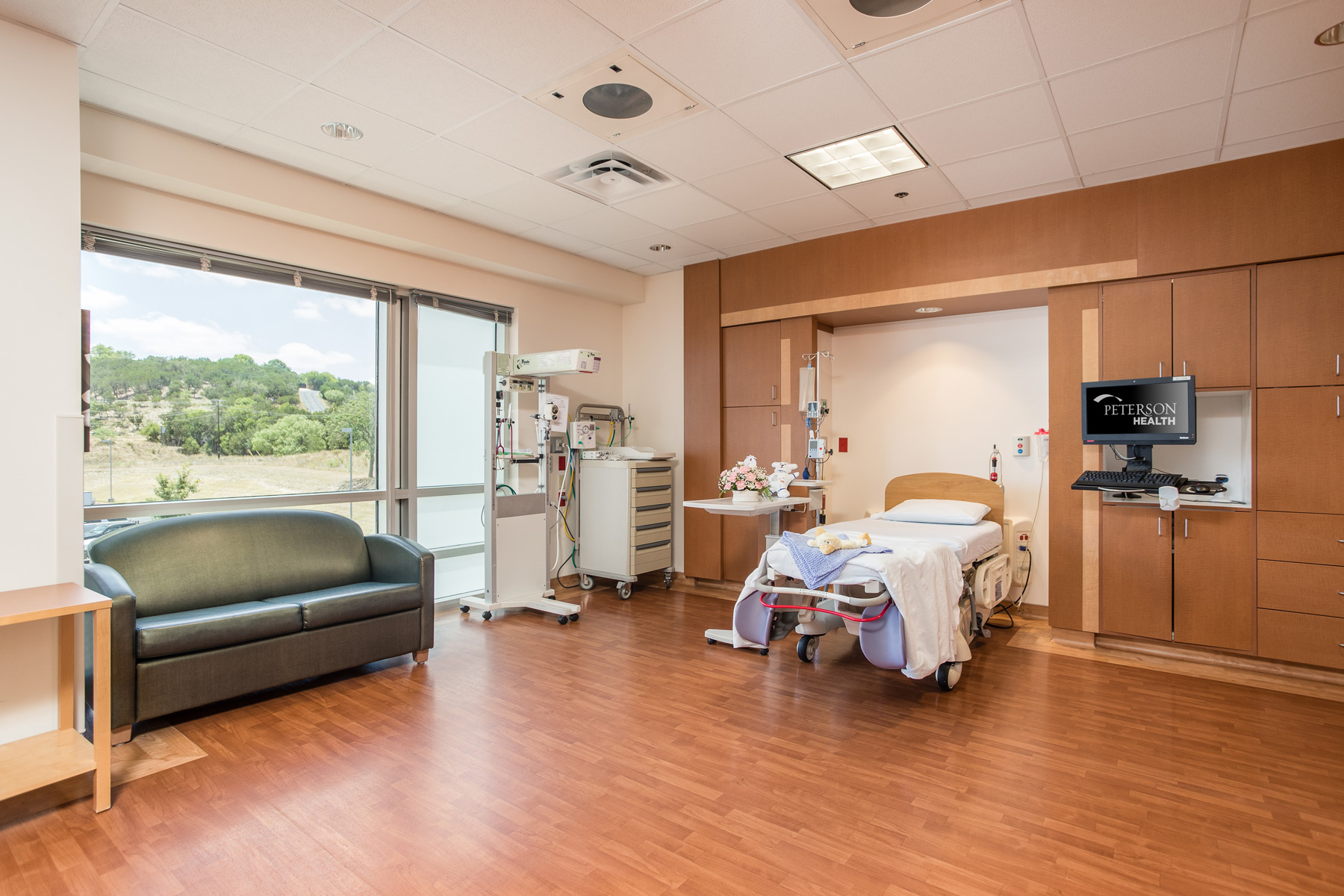
Whether you go into labor or come for a scheduled induction of labor or C-section, The Baby Place staff will be ready to greet you and help you through this last part of your pregnancy and childbirth. You may benefit from preparing for this big day in a variety of ways.
What to bring
One way you can prepare for the big day is to pack a bag for the hospital…before you go into labor. So, what should you bring?
- Sleepwear and robe – While you won’t be wearing this for delivery, you’ll likely have at least one night in the hospital after baby is born, so pack something comfy that makes you feel good. You can even get nursing sleepwear.
- Underclothes – You are likely to have some bleeding and discharge, and the hospital will provide you with pads and disposable underclothes, but you may want to bring some of your own undies and pads. And don’t forget a nursing bra if you plan to breastfeed.
- Warm socks – they can make you feel so much better!
- Clothes – you won’t need a lot of clothes. Comfy leggings and nursing tops are great. Remember you won’t be back to your pre-pregnancy figure for some time, so maternity leggings are still your friends.
- Sweater or sweatshirt – no matter what time of year, hospitals can be chilly.
- A change of clothes for dad or other support person.
- Nursing accessories – breast pads, nursing bras, camis and tops, a nursing cover.
- A diaper bag for your baby’s things to bring to the hospital and mementos to take home.
- Your phone, camera, video camera. Your baby’s public awaits.
- Home-going outfit for baby (and a spare, because, well…babies).
Where to Go
When you get to Peterson Regional Medical Center at 551 Hill Country Drive, Kerrville, TX, you will head straight to the Women’s Services area, where you’ll quickly be led to your room. If you go into labor and arrive after hours, you can drive right up to the emergency room, where you’ll be greeted and escorted to Women’s Services.
Whether you enter the front door or the emergency entrance, don’t worry…Women’s Services is just a couple of minutes away from any entrance. Your birth partner can park your car in the free parking lot directly in front of the hospital. Once in the Women’s Services area, visiting family and friends can enjoy a spacious waiting area on the second floor, right outside of the Women’s Service area and overlooking the beautiful atrium.
Your Room

The Baby Place will welcome you into one of its 14 beautifully-appointed rooms – your baby’s first room. Each room features advanced technology wrapped in a home-like environment. From the inviting décor to the expert staff, The Baby Place is designed exclusively for the comfort and safety of mom and baby, creating a setting that feels more like home than a hospital.
Each room features amenities to make your stay enjoyable, including wireless service, cable TV, an adjustable thermostat, and “at-your-request” room service for your nutrition needs. We welcome you and any members of your family you choose to be a part of your special day. Friends and family unable to visit can see photos of the baby, featured with your permission on the Lullaby Lane section of the Peterson Health website.
Beyond the family-centered, home-like environment, you can rest assured your room features advances such as bedside monitoring and documentation, electronic medication dosing and a high-tech security system to help keep moms and babies safe and secure.
Length of Stay
How long you’ll stay at The Baby Place is largely dependent on how you and your baby are doing. Typically, moms and babies stay 24-48 hours with a vaginal delivery, and 48-72 hours for a Cesarean delivery (C-section). Moms and/or babies who experience complications may need to stay in the hospital longer.
Visitors and Security
You and your birth partner can be at the hospital during your entire stay, with no restrictions for visiting hours. Other family and friends are welcome to visit during The Baby Place visiting hours of 8 am to 8 pm. The Baby Place is a secured unit, meaning it’s locked at all times. You and your guests will press the intercom button outside of the unit to identify who you are and who you are there to see.
In addition, The Baby Place has a new layer of security with the Hugs® Wi-Fi Infant Protection Solution from Stanley Healthcare. This system safeguards babies against the threats of abduction and mother/infant mismatches – situations that have never occurred at Peterson Health, but ones that cause parents concern. This system, along with the locked unit, help to keep you and your baby safe and secure.
Stages of Labor
Childbirth, when natural, goes through four stages of labor: early labor, active labor, delivery of the baby, and delivery of the placenta. Of course, if you have a C-section, some of these stages may be skipped if a Cesarean delivery is considered safer than a vaginal birth for mom and/or baby.
Early Labor
Early labor, when your cervix starts to dilate (open), can last for a few hours to a few days. First-time moms usually experience a longer early labor period than with subsequent pregnancies. During this stage, you may have contractions, felt as pressure and pain in your abdomen and sometimes in your back, coming every 5 to 20 minutes, lasting about 30 seconds to a minute, and generally gaining in frequency and intensity. You may have what’s called a “bloody show,” meaning a light, red-tinged vaginal discharge. If you experience significant, bright-red bleeding, you should call your doctor and head to the hospital.
Sometimes, contractions seem to start and then go away. This is normal and is often called Braxton-Hicks contractions. When your cervix starts to dilate, your contractions won’t go away, and they’ll come regularly. When you’re having regular contractions, it’s time to head to the hospital at the stage you and your provider planned ahead of time. If you have questions, call your doctor or Certified Nurse Midwife and see when she or he wants you to leave home for the hospital.
Active Labor
When you’re in active labor, your contractions become stronger, closer together, longer and more painful than in early labor. At this point, you should be in the hospital. As labor progresses, you get less and less time to rest between contractions, and you may feel pressure and pain in your back. At this time, your cervix is fully dilating. If you wish and if your doctor says it’s safe, you can receive an epidural pain block to ease the pain, usually early in active labor or even late in early labor.
It’s important to care for yourself during early and active labor to help cope with the pain and the hours of preparation your body is working through.
- Try to rest between contractions.
- Walk around the house or The Baby Place halls. Change your positions among lying down, sitting, standing and walking as you can.
- If your diet is limited, suck ice chips. Ask your provider if you can have water or snacks.
- Deal with back pain with back massages on demand from your partner as well as ice packs.
- Try a cold washcloth on your forehead and/or back of your neck. Have your partner freshen it often.
- Visit the restroom frequently to empty your bladder. This can help relieve some pressure.
- Remember your plan for pain relief and feel no guilt if you change that plan along the way!
- When it’s time to push, find a comfortable position. You can change positions, too.
- Push when your provider tells you to, as well as when you feel the need with the direction of your provider.
Baby arrives!
The best part of labor is delivery! When your cervix is fully dilated, your provider will instruct you to push. The delivery team will guide you as to when to push and when to rest. This stage can last anywhere from a few minutes to several hours, with first-time moms typically experiencing the longest labors.
During this final stage of labor, you may feel pressure on your rectum as your baby moves down, and you may feel a strong urge to push. Let your provider guide you as to when to push. If you need more room to deliver the baby, your provider may perform an episiotomy, which is a small cut made at the vaginal opening, although this isn’t common.
When your baby is ready, his head will begin to show (crown), and your provider will guide her out of the birth canal, either manually or, if necessary, with the help of special tools. The provider will cut the umbilical cord, assess your baby’s breathing, and if all is well, hand over your baby to you for your first snuggle!
Final stage: placental delivery
Many women are surprised the first time they give birth that after the baby is born, they still have something to deliver. The placenta that housed the baby during pregnancy also needs to be expelled. Contractions for placental delivery usually begin 5 to 10 minutes after birth. Your provider will tell you when to push. You may experience chills or shakiness; this is normal. If you’d like to see the placenta, just ask.
After birth
If your baby is in good health, he will stay with you in your room. You’ll be encouraged to hold and snuggle with her and to begin breastfeeding, usually within an hour of birth. The Baby Place nurses and lactation consultant can help you get started breastfeeding.
Enjoy some moments with your partner and baby as a new family. Rest. If approved, drink water and order a good meal. And now is the time to follow the age-old, best advice ever: Sleep when the baby sleeps!
Going home
Your time in the hospital will be spent recovering and learning how to feed and comfort your new baby. Your nurse will help you learn how to care for your first baby and hit any refreshers that experienced parents may need. Before you know it, it will be time to head home and start your new life with your child.
You’ll need a car seat to go home, and you should make that first doctor’s appointment for your baby in the coming week. Break out that cute homecoming baby outfit just before you leave.

